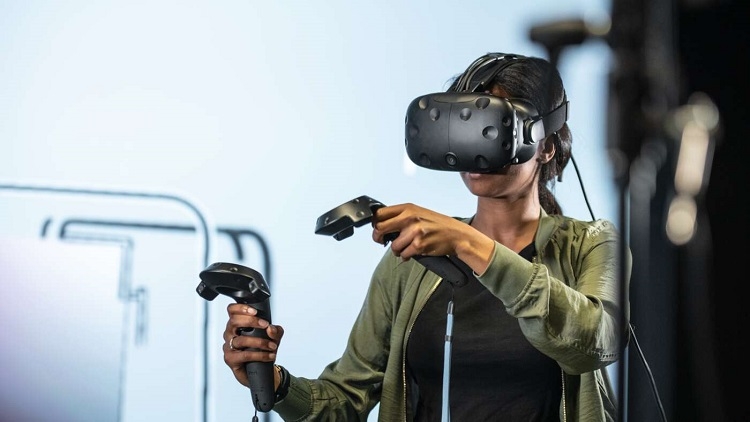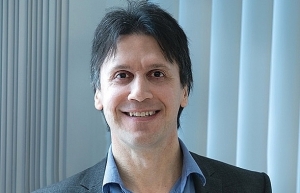Five ways to better 5G
 |
| Denis Brunetti, president of Ericsson in Vietnam, Myanmar, Cambodia, and Laos |
This report by Ericsson Consumer Lab explores key trends behind the adoption, use, and perception of consumers with and towards 5G, globally. The study highlights the impact that 5G is already having on smartphone users worldwide and what they expect the technology to deliver in the future.
Indoor coverage is one of the focus areas to emerge from the consumer research, with one-in-five 5G users already reducing Wi-Fi use on their phones indoors because of the benefits of 5G mobile connectivity. In fact, 5G is already beginning to trigger new user behaviours with early adopter 5G users spending an average of two hours more on cloud gaming and one hour more on augmented reality (AR) apps per week compared to 4G users.
However, while 5G users are satisfied with speed, about 70 per cent look forward to the availability of more innovative services and new apps, enabled by 5G. Consumers say they are willing to pay 20-30 per cent more for 5G plans bundled with digital service use cases.
COVID-19 lockdowns and movement restrictions mean that the vast majority of 5G early adopters’ regular experiences with the technology have been indoors. As a result, early adopters indicate that indoor coverage is two times more important than speed or battery life in delivering satisfactory 5G experiences.
The report also outlines five ways for communications service providers (CSPs) to meet consumer expectations both in the immediate and longer terms, including:
- Enhancing the understanding regarding the value that 5G brings by addressing the knowledge gap to educate consumers;
- Meet consumer expectations by ensuring that the quality of indoor and outdoor coverage is consistent;
- Adapt to network requirements of new services enabled by 5G;
- Focus on the jobs consumers want 5G to do, to envision new use cases;
- Go beyond just show cases: accelerate the commercialisation of existing and new use cases.
With regards to consumer behaviour, the report highlights that consumers intend to upgrade to 5G despite the pandemic. At least 300 million smartphone users could take up 5G in 2021. By the end of 2020, 22 per cent more smartphone users with 5G-ready smartphones could have adopted 5G if knowledge gaps had been addressed.
5G early adopters seem to be more satisfied with 5G than smartphone users connected with 4G LTE. Among smartphone users with 5G-ready smartphones and a 5G plan, across the 15 markets covered in the study, an average of 10 per cent more users are very satisfied with 5G, compared to those using 4G.
 |
| VR in front of large screen |
5G triggers changes in usage behaviour, starts to displace Wi-Fi. 5G users spend two hours more per week using cloud gaming and one hour more on AR apps compared to 4G users. 20 per cent say they have decreased their usage of Wi-Fi after upgrading. Households with three or more members actively using home broadband were more likely to report a decrease in their reliance on Wi-Fi once they upgraded to 5G. During the pandemic, with home broadband usage at an all-time high, consumers seem to be relying on 5G cellular connectivity as a backup when performance issues arise with shared home Wi-Fi. When comparing usage of digital services between 5G vs. 4G, 5G users are more engaged with using high bandwidth immersive digital services than 4G users.
Indoor 5G coverage more important for consumers. 5G early adopters rate indoor 5G coverage as two times more important than speed or battery life in driving satisfaction.
Early adopters are pleased with 5G speeds but expect more innovation. 70 per cent are dissatisfied with the availability of innovative services and expect new applications making use of 5G. Apart from some Asian markets such as South Korea, Japan, Taiwan, and China, in most markets globally, service providers, while attempting to drive a service-led strategy, have been slow in bundling 5G with digital services beyond what is already being offered on 4G – such as music and video steaming services and other apps. Instead, service providers need to offer exclusive content and services that could differentiate a 5G experience from 4G and promote a sense of novelty and exclusivity.
5G home broadband is a rural and urban opportunity. In our survey, 18 per cent of consumers see 5G fixed wireless access (FWA) services to be extremely relevant.
Consumers value 5G plans bundled with digital services and are willing to pay 20-30 per cent more. However, two-thirds of use cases highly valued by consumers have not yet been commercialised. Despite the pandemic, smartphone users surveyed are willing to pay 10 per cent more on average for 5G plans that offer enhanced mobile broadband access. However, they are willing to pay even more for plans with bundled innovative digital services. Globally, the inclusion of relevant use cases on a 5G plan increased the 5G premium further, by 20-30 per cent. However, there are marked differences in markets across the globe. In Australia and the UK, smartphone users were willing to pay an additional 7 per cent, while in the United Arab Emirates (UAE) and China it was 30 and 45 per cent more, respectively, compared to what smartphone users say they pay today for a 4G plan.
Service providers together with other ecosystem players are inspired to accelerate the commercialisation of digital services that are currently being used as showcases of the new technology. The experiences from other markets offer great learnings for service providers in Vietnam as they look to strengthen their 5G offerings in the market.
 5G and factories of the future 5G and factories of the future |
 Ericsson named leader in global 5G network infrastructure market 2020 Ericsson named leader in global 5G network infrastructure market 2020 |
 Experiencing the benefits of 5G across industries Experiencing the benefits of 5G across industries |
What the stars mean:
★ Poor ★ ★ Promising ★★★ Good ★★★★ Very good ★★★★★ Exceptional
 Tag:
Tag:
Themes: Digital Transformation
Related Contents
Latest News
More News
- First members of Danang International Finance Centre revealed (December 22, 2025 | 17:39)
- Human-centred governance seen as key to AI development (December 19, 2025 | 18:19)
- Top 10 notable events of Vietnam’s industry and trade sector in 2025 (December 19, 2025 | 14:00)
- Tungsten surges to 12-year high as world enters a new 'black gold' race (December 18, 2025 | 17:27)
- Vietnam’s coffee exports set new record despite price pressures (December 18, 2025 | 17:13)
- Garment and textile sector seeks new growth after volatile year (December 18, 2025 | 17:01)
- VinSpeed and Siemens strengthen cooperation for high-speed rail development (December 18, 2025 | 16:53)
- High-tech adoption for TH true MILK (December 18, 2025 | 13:39)
- Takeda supports health resilience amid climate change challenges (December 18, 2025 | 12:39)
- Mondelez Kinh Do - a chapter of purpose-led leadership in Vietnam (December 18, 2025 | 09:44)




























 Mobile Version
Mobile Version